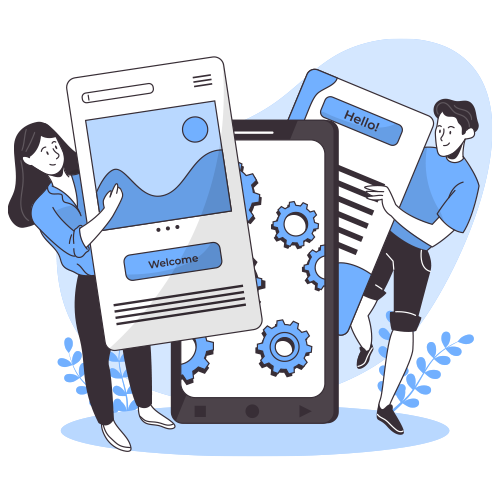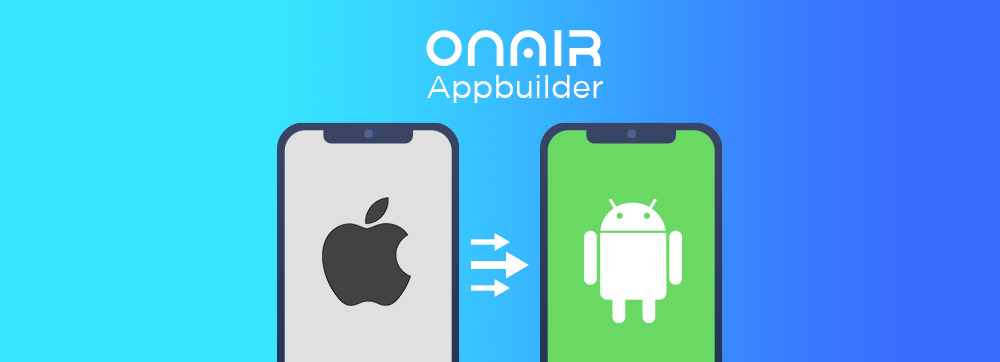Today, we can’t imagine our day without mobile phones. For some reason or other, we need mobile phones. All the technology in the world is now available in the palm of your hands. So, if you also want to stay relevant as a business and reach your target audience, all you need is a mobile app.
For this, you will also need to decide on a platform to develop your application. And the two popular choices are Android and iOS. It’s no secret that they both have their own merits and users in millions. But in the end, platform decision should be based on resources, popularity in your local area, between your target audience, and circumstances.
In recent times, in developed nations, most users preferred using an iPhone over a Google device. This is the reason many businesses started creating apps for iOS users. But as the market for Android Increases, owners look to switch from iOS to Android to target the other set of audiences.
So, if you also want to switch your app from iOS to Android, keep on reading as we mention all the challenges and steps required.
Reasons for converting an iOS App to Android
Before we begin with “how?” let’s see “why?”
- Wider Market Reach:
You can target Android users that make up a 72% share of the global mobile market. This way your app can reach out to more people and sell to a wider audience.
- More features:
You can leverage the many features that Android offers to its users over the iPhone to appease your target audience. This includes the back navigation button, Android intents, and Android wear, widgets, and push notifications.
- Save on Resources:
You can avoid the cost of hiring Android app development services to create something new. By converting the iOS to Android app, you are using the same basic design and structure. This will save a lot of effort, time, and money by replicating your old iOS app.
- Get high ROI:
Through conversion, you can market to a global audience of both iOS and Android users. You get access to millions of new users who will guarantee a high and fast return on your investment.
Understanding mobile app portability
There are lots of differences between Android and iOS apps, starting from the operating systems. One cannot simply run iOS apps and android devices or vice versa. Both native Android and iOS mobile app development require unique parameters. It includes navigation, interface design, and programming language. It’s a complex process that needs proper time and planning.
Both have different screen settings, life cycle, and data access approach. You need proper authorization to sell your app on the app store. You have to be very careful while transferring from one app to another. You may keep a few features, but developers will have to create most of them from scratch. It is the only way to reach your company’s business requirements and match the level of performance of your old iOS app.
Challenges for porting iOS app to Android app
- Architecture difference
The thing about Android is that there are too many versions of the operating systems. New ones are coming out every few months. It is difficult to keep up with the changes and select one that covers all the functionalities. Features available in one version may not be there in another older version. This includes functionalities such as navigation, notification, file management, and compatibility of other apps in the mobile device.
- Design features
This is one of the most important steps for porting iOS apps and Android to be successful. The UI of both the devices are completely different and have their own set of design rules. This applies to the shape, size, and concept of the app. Apple uses human interface guidelines, while android is more into Material design standards. So, you need to consider designing the app according to the new platform.
Apart from the above two main challenges, there are conflicts while deciding on libraries, frameworks, and code. You need to check the compatibility of those tools before converting an iOS app to an android app. You also need to focus on the testing part of it. The number of tests you need to run depends on the number of android devices you wish to support.

How to convert an iPhone app to Android app
- Create a proper plan
Mark out the areas you have a rational idea about: the budget, designs, features, architecture, and workflow. You need to implement the plan and follow it precisely to adhere to timelines. You also need to think about the problems and errors that can arise because of porting. You need to address them and create an Android app that meets your business requirements and user expectations.
- Assessment and implementation
Execute the plan by removing all the technical issues with code, libraries, and third-party services. Decide on the technology stack to start the mobile app development process. Choose one that fits your budget and time allocation.
- Testing the app and releasing
There are lots of ways to check for quality after converting an iOS app to an Android. Testing also depends on the android app development services available. Once you are sure of the application’s stability, you can submit it to the Google Play store. This is much easier than compared to Apple Store’s eligibility criterion. Google is less strict and can release an app of any quality.
How to convert an iOS App into an Android App?
To sum it all up, all you need is to have a proper plan before deciding to convert an iOS app to an Android. You need a proper approach to create a solution almost identical to its previous version. So, you can take help from ON AIR App Builder to create iOS or Android app. Start Now!


